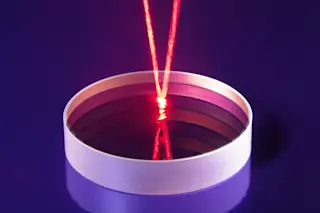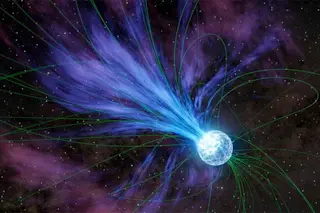Chances are, you can thank a laser for helping you get through the day. The technology lets us do everything from scan groceries at the checkout to remove regretted tattoos.
The word laser, coined in 1957, is an acronym for “light amplification by stimulated emission of radiation.” Since that -er ending makes a laser seem like a doer of ... something, it soon spawned the verb “to lase.”
Unlike the sun or a flashlight, which shines in a broad range of colors combined to produce white light, lasers lase by producing a concentrated beam of a single wavelength, or color.
In 2016, scientists created a new type of microlaser, smaller than a red blood cell, which could lead to innovations in medical imaging.
That same year, the world’s most powerful laser, China’s Superintense Ultrafast Laser Facility (SULF), fired a single pulse equivalent to 5.3 petawatts — 5.3 quadrillion watts!
SULF ...















